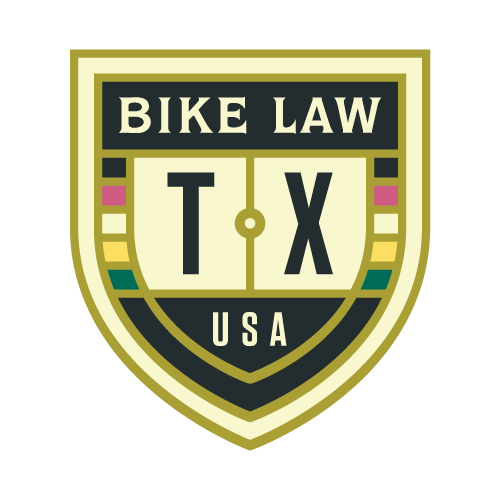It’s important to know your legal rights (and duties) when bicycling in Texas. It is especially important after a bicycle accident (we call them bicycle “crashes” and explain why here).
Fault of the Motorist or Bicyclist in a Crash Affects Recovery:
In any crash, the question of fault or liability asks who was responsible for causing the accident and to what degree. Different states treat this fault issue differently depending on the fault of the injured person. Texas follows a 51% modified comparative fault rule, which means that an injured party cannot recover if they are more than 50 % at fault for causing the accident. However, the injured party can recover if they are 50% or less at fault, but that recovery would be reduced by its degree of fault. Therefore, it is critical that an injured party in Texas demonstrate that his or her fault, also known as proportionate responsibility, was 50% or less if they hope to recover from another party for injuries suffered. Source: Tex. Civil Practice & Remedies Code §33.001, et seq.
Right to the Road
Bicycles are defined as vehicles and generally have the same rights and responsibilities as motor vehicle drivers.
Where to Ride
- Bicyclists are required to ride as near to the right of the roadway as practicable, when riding slower than the speed of traffic.
- Full lane use is allowed when traveling at the normal speed of traffic, preparing for a turn, overtaking and passing, avoiding hazards or unsafe conditions, traveling in a lane too narrow to share, and avoiding a mandatory turn lane.
- Bicyclists may, but are not required to, utilize any usable path for bicycles that has been provided adjacent to a roadway.
- Sidewalk riding is generally prohibited. Check local ordinances for variations on this rule.
HOW TO RIDE
- Bicyclists may ride two abreast if traffic is not impeded.
- Bicyclists are required to slow down and come to a complete stop at stop signs and traffic devices signaling red.
- Bicyclists must signal when turning or coming to a stop.
Bicyclists Overtaking Cars
Bicyclists on roadways must exercise due care when passing a standing vehicle or one proceeding in the same direction.
Cars Overtaking Bicyclists
Motor vehicle drivers are required to pass bicyclists at a safe distance to the left. Also, motor vehicle drivers may pass bicyclists heading in the same direction in a non-passing zone only when safe to do so.
Equipment
- At night, a bicycle must be equipped with a front white light visible from 500 feet away, and a rear red reflector visible from 300 feet or lamp visible from at least 500 feet away.
- A bicycle must be equipped with a brake capable of making a braked wheel skid on dry, level, clean pavement.
Prohibitions
- Bicyclists must ride with at least one hand on the handlebars.
- No bicycle may have more than one rider per saddle.
Alcohol
- Texas’s DUI statute does not directly apply to bicyclists; however, bicyclists riding a bicycle while intoxicated may still be arrested and charged with other infractions, like public intoxication.
